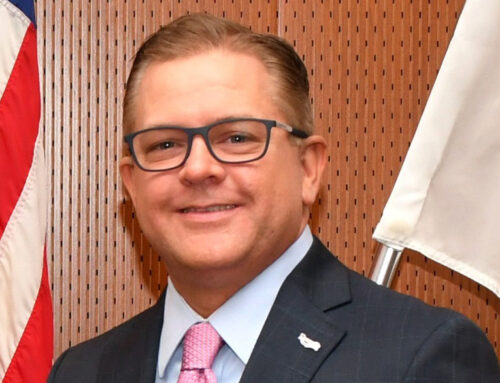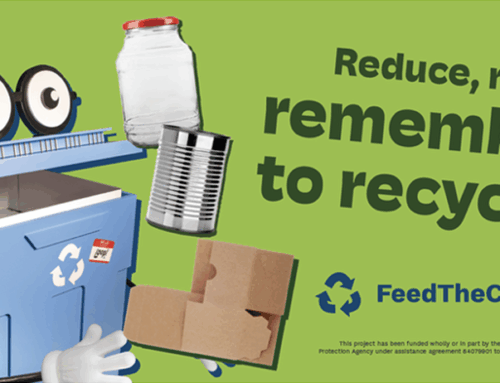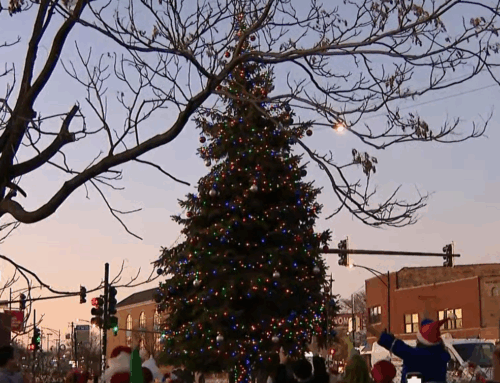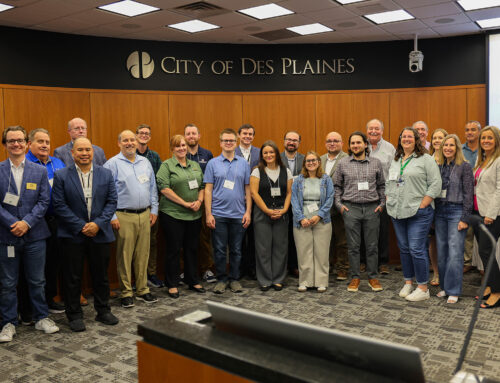Priority Climate Mitigation Strategies for the Chicago MSA Priority Climate Action Plan
CHICAGO (Feb. 20, 2024) – While a broad diversity of strategies involving all sectors across the greater Chicago Metropolitan Statistical Area (MSA) will be necessary to reduce emissions quickly and effectively, only a few can be named consensus Priority Strategies for the purpose of the Priority Climate Action Plan (PCAP). Aligned with the parameters of the U.S. EPA’s Climate Pollution Reduction Grant Program, these draft Priority Strategies are planned for inclusion in the PCAP because:
- The strategy addresses a significant source of emissions.
- The strategy can reduce emissions in a quantifiable and transformative way.
- The strategy can be implemented in the next five years.
- Benefits to Low-Income and Disadvantaged Communities (LIDAC) can be realized.
- A proposal submitted to the U.S. EPA’s CPRG implementation grant program for consideration may be competitive because there is a gap in other federal and state funding sources.
- And because an eligible organization in the Chicago MSA has indicated that they are planning to apply for CPRG implementation funds to implement this strategy.
To view all the proposed climate mitigation strategies, see the complete spreadsheet here. The complete list of climate mitigation strategies is expanded from the Mitigation Strategies presented in the 2021 Climate Action Plan for the Chicago Region (2021 CAP), Appendix D. While the 2021 CAP tailored strategies specifically for municipal implementation, the PCAP intends for more comprehensive engagement and implementation across local, regional, and state government. It is also inclusive of additional counties in Indiana (Lake, Porter, Jasper, Newton), Wisconsin (Kenosha), and Illinois (Grundy, DeKalb), which were not part of the scope of the 2021 CAP.
Draft Priority Climate Mitigation Strategies
The intention is for the Priority Climate Mitigation Strategies to enable competitive CPRG implementation grant proposals to be submitted to the U.S. EPA on April 1. To be eligible for funding, proposals from the region must address a priority strategy contained in the Chicago MSA PCAP. Please use the comment form to identify a missing strategy that will enable your competitive proposal. Any jurisdiction in the Chicago MSA may alternatively or additionally seek funds to implement strategies included in their respective state PCAPs. See CPRG information for Illinois, Indiana, and Wisconsin.
The Priority Climate Action Plan is being done on a compressed timeline due to the urgency of the climate crisis and the unprecedented availability of both planning and implementation funds through the Inflation Reduction Act. The PCAP must be completed and submitted to the U.S. EPA by March 1. Please provide helpful comments to assist us in completing an effective PCAP for the Chicago MSA within this timeframe. Please review and comment by February 24th.
Please provide comments on the Priority Strategies below through the online form, which has been linked above as well. You do not need to comment on all strategies. Strategies are grouped by Mitigation Objectives. Please see the previously mentioned complete priority strategies spreadsheet here, which has color coding to clarify which strategies are consensus priority strategies, which may be included in the PCAP as necessary, and which are not likely to be included as a priority strategy.
- Objective: Decarbonize Energy Sources
DE2: Increase renewable energy supply and energy storage capacity for residential, commercial, municipal, and industrial electricity use
DE6: Engage the community to choose clean energy through procurement, aggregation, community solar, and other collaborative programs and by participating in financing, rebate, and incentive programs.
- Objective: Optimize Building Energy
BE1: Engage residential utility customers to optimize building efficiency leveraging residential energy assessments, energy efficiency rebates, incentives, tax credits and weatherization, housing rehab, and energy assistance programs.
BE2: Engage residential utility customers to electrify space and water heating leveraging residential energy assessments, rebates, incentives and tax credits and weatherization and energy assistance programs.
BE3: Engage commercial utility customers to optimize building efficiency leveraging tools and programs such as facility assessments, energy management, retro commissioning, demand response, performance contracting, energy efficiency rebates, incentives, tax credits, and PACE financing.
BE4: Engage commercial utility customers to electrify buildings leveraging tools and programs such as facility assessments, energy management, rebates, incentives, tax credits, direct pay and PACE financing.
- Objective: Implement Clean Energy Policies
EP2: Incentivize and encourage high performance, all-electric, and net zero new building construction.
- Objective: Decarbonize Transportation
DT7: Transition transit trains and buses to low and zero-emission equipment
DT8: Support transit decarbonization by investing in distribution, make-ready, charging and other clean fueling infrastructure
DT9: Transition medium and heavy duty freight vehicle and non-road vehicles to low and zero-emission equipment
DT10: Support freight decarbonization by investing in distribution, make-ready and clean fueling infrastructure
DT16: Transition gas-powered landscaping equipment to low and zero emissions models.
- Objective: Reduce Vehicle Miles Traveled
VMT11: Establish a regional network of mobility hubs and expand shared micromobility and electric micromobility systems.
- Objective: Manage Water and Waste Sustainably
W1: Capture biogas and convert to energy.





